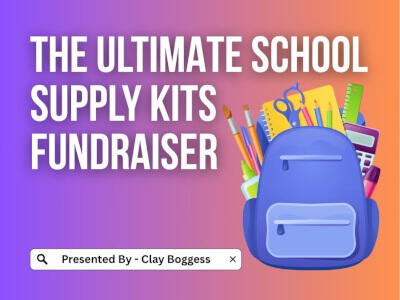
A simple guide to successful high school selling.
Before the start of their sale, we work with sponsors to make sure they determine their group's financial goal, establish how many items each student needs to sell, and are prepared to track their progress. If you understand how much money you need, it's relatively easy to calculate how many items each seller needs to sell.
Once your sale is underway, you must ensure your students stay on track. Once sponsors receive their sales results, they can compare them to their initial projections to see how well they did. This can also help them make needed adjustments for future sales. Here are some things you want to look at to assess your high school fundraising results:
Total Brochure Items Sold
The most general interpretation of your performance is how many total items your group sold. For example, if you had 50 students and set a goal of 10 items per seller, you hoped to bring 500 total items. If the average retail price in the brochure was $10, you initially projected a $5,000 gross sale. The amount of items sold provides information about the group as a whole, but it doesn't provide any detailed information about individual sellers.
Total Gross Fundraising Sales
Even if your group reached its 500-item goal, that doesn't mean you sold $5,000 worth of merchandise. If you sold 500 items, but the average price was $7.00, your gross sales would have been $3,500. However, if you sold out of a cookie dough brochure containing all $15 items, your gross sales would be around $7,500. Sometimes students will sell more items out of a lower-priced brochure; however, what's most important is picking the best possible brochure for your area, regardless of price.
Average Items Sold per Seller
If you set your seller item goal at ten, but your average was closer to 12, does this mean you exceeded your sales goals? The answer depends on how many students participated. If only 15% of your students averaged 12 items, then probably not. On the other hand, if you had an above-average participation rate but your average number of items sold was less than 10, you may have been surprisingly better off.
Average Retail Sold per Seller
Perhaps a more beneficial way to assess individual student performance is not just to look at the items sold per seller but how many total dollars they bring in. For instance, students who sold fewer of the more expensive items will sometimes outperform those who sell many lower-priced items. Therefore, students who sell more items won't necessarily bring in the most money.
Successful organizations are always looking for ways to increase sales. However, it will be harder for those who don't understand the numbers to make adjustments to improve future fundraising outcomes.
Author Bio
Clay Boggess has been designing fundraising programs for schools and various nonprofit organizations throughout the US since 1999. He’s helped administrators, teachers, and outside support entities such as PTAs and PTOs raise millions of dollars. Clay is an owner and partner at Big Fundraising Ideas.



